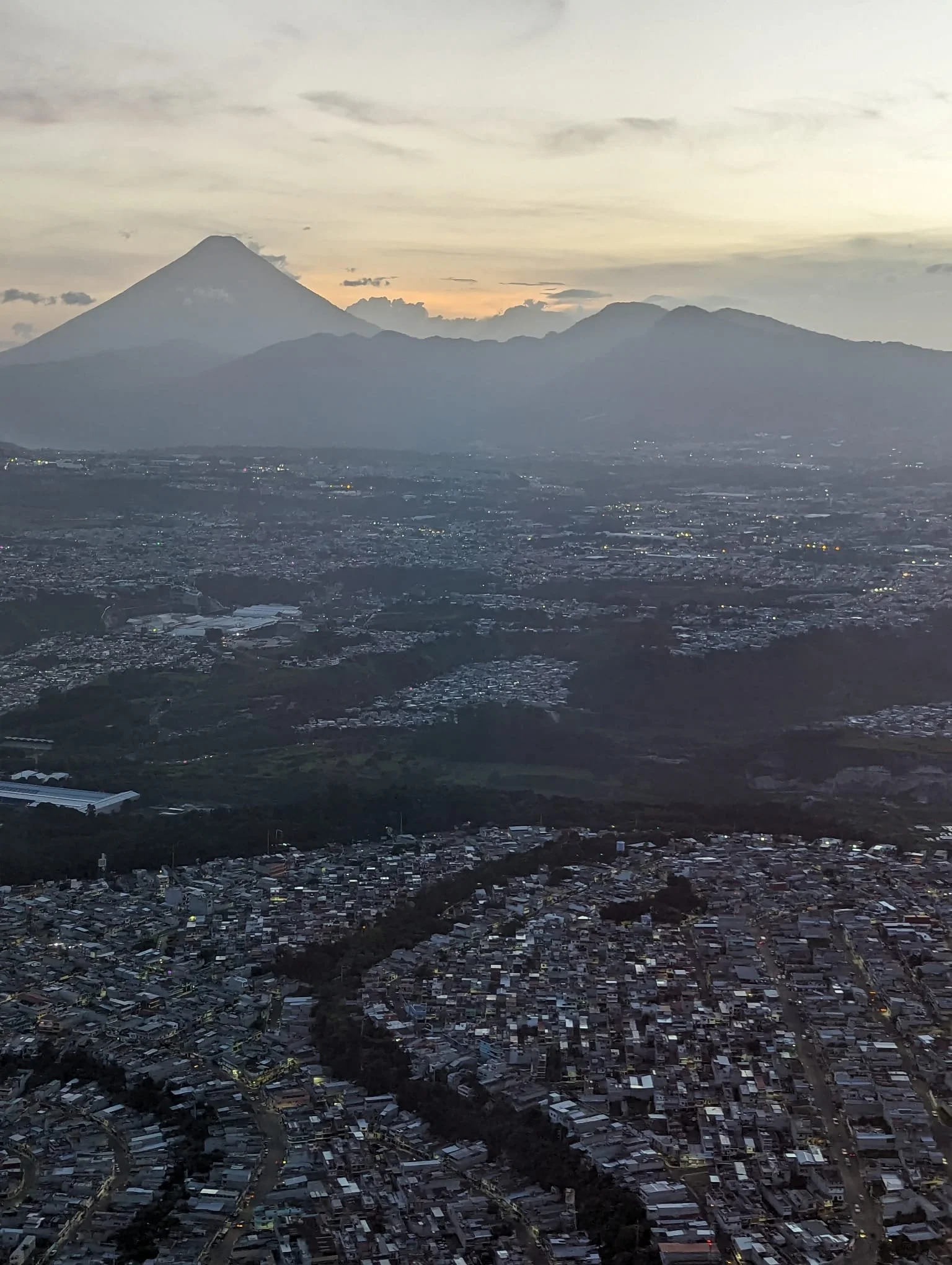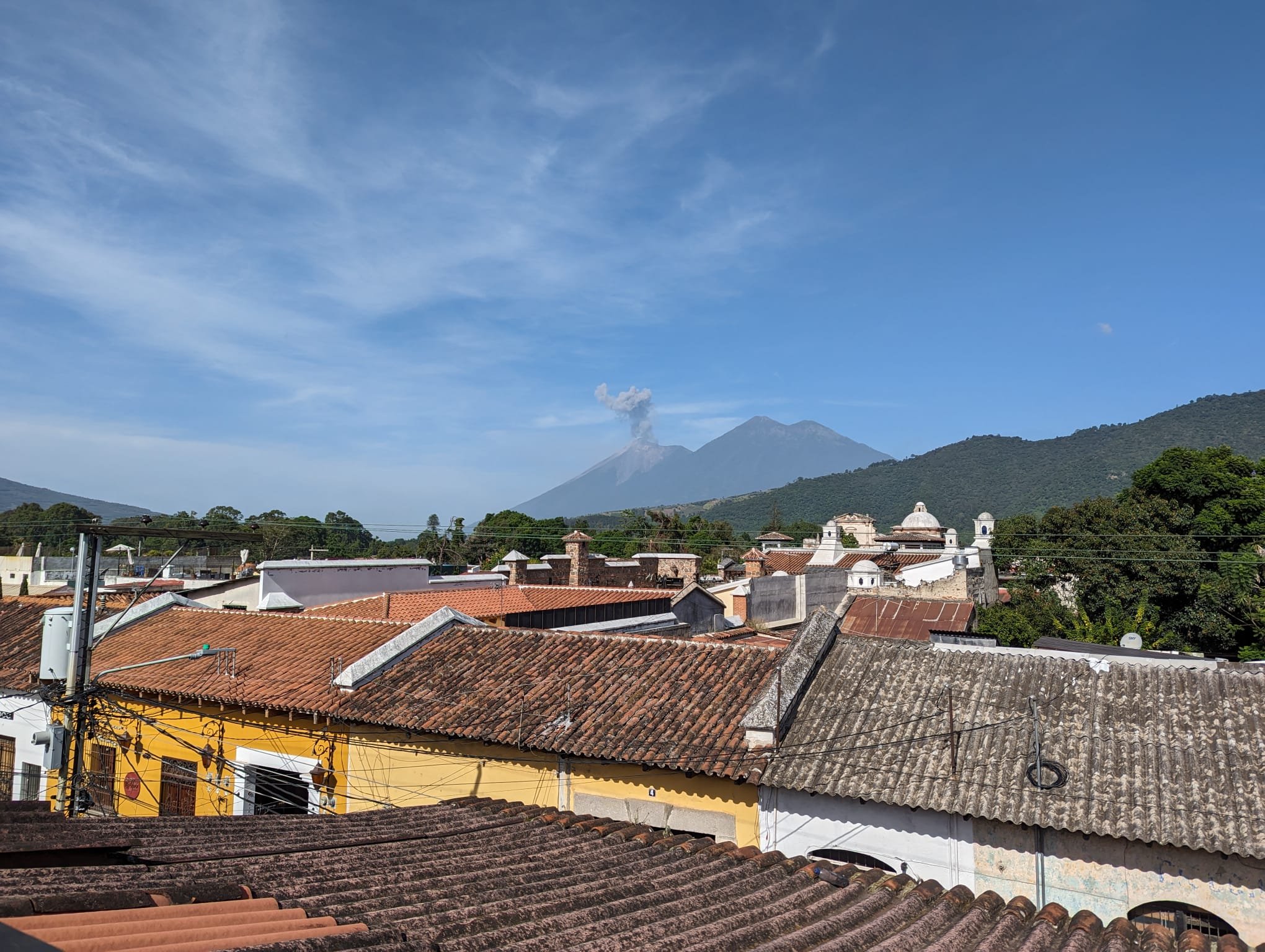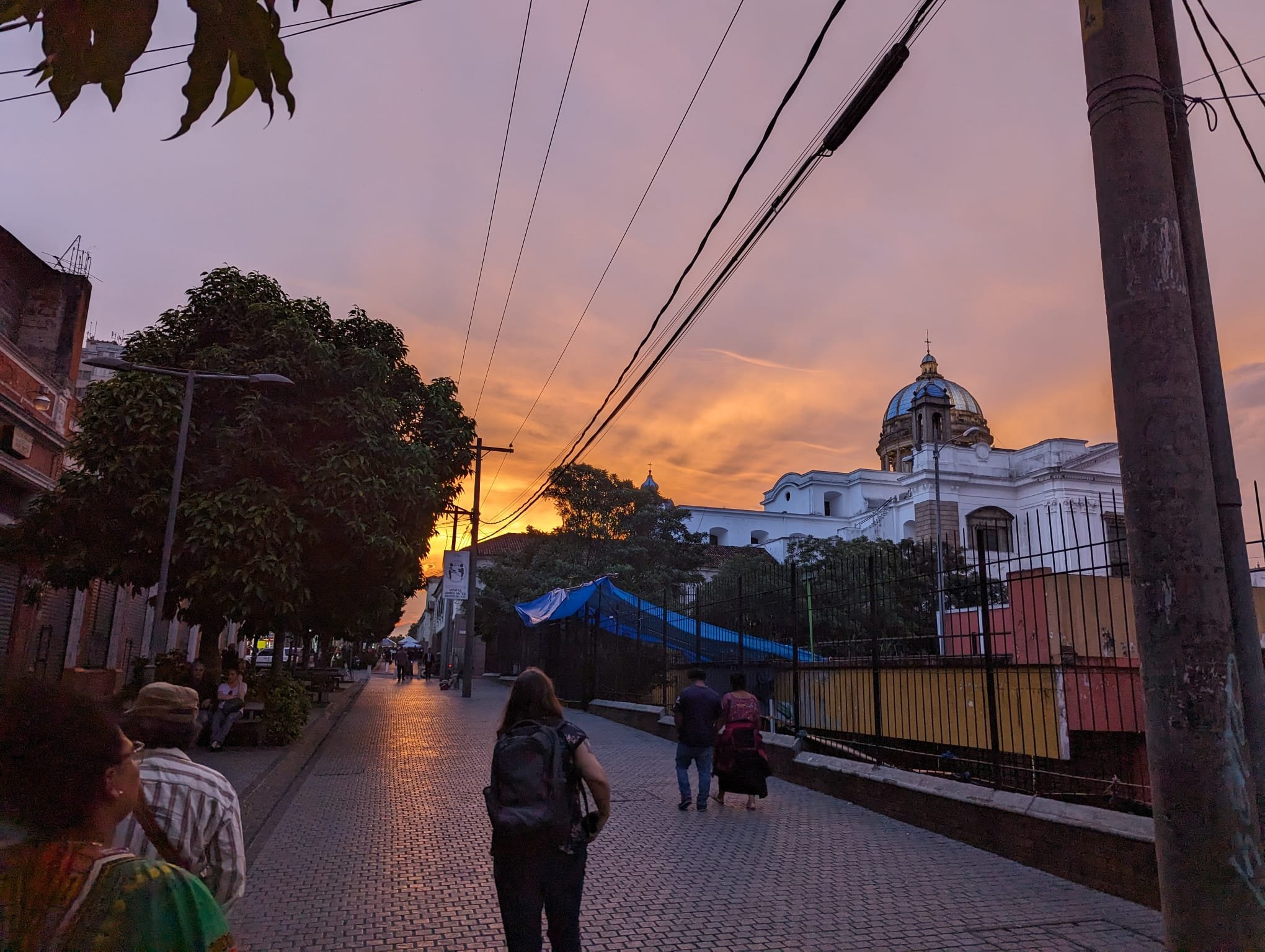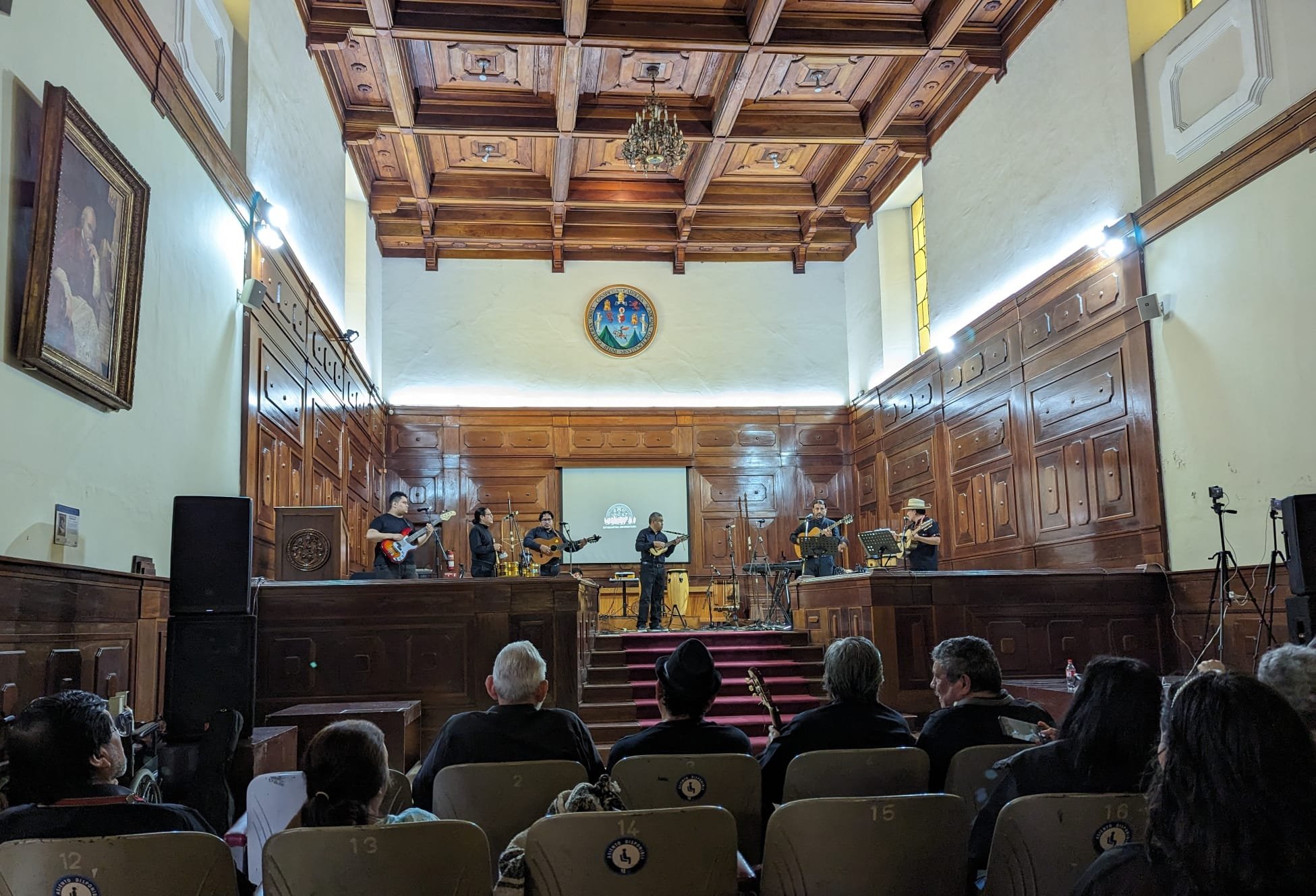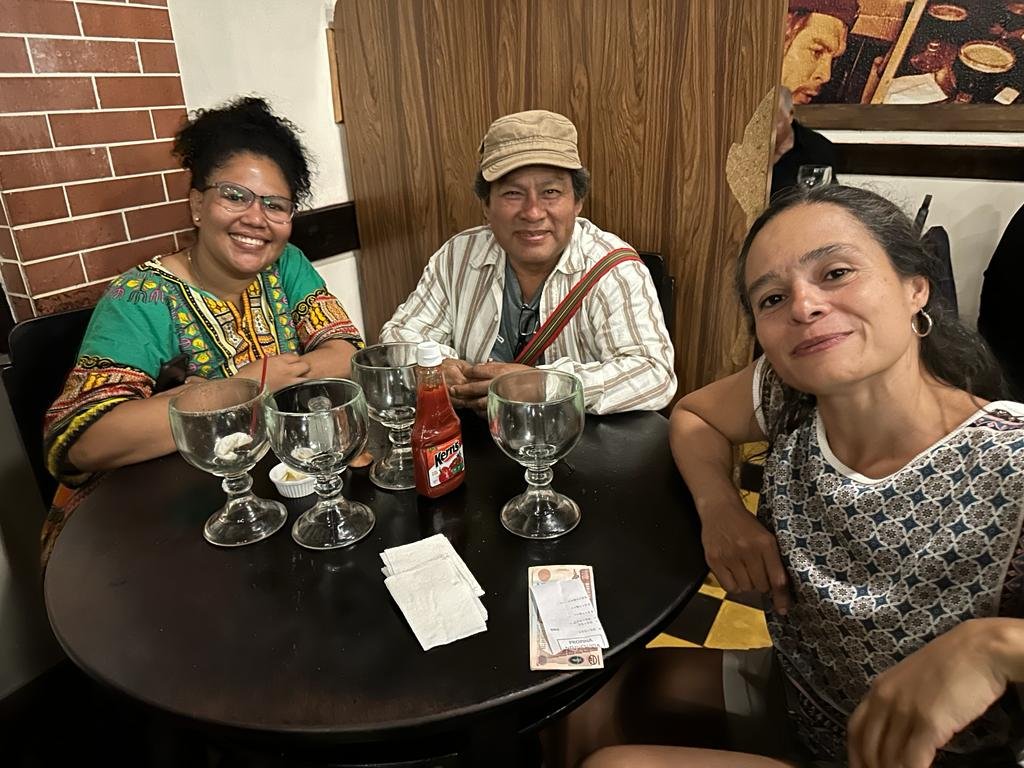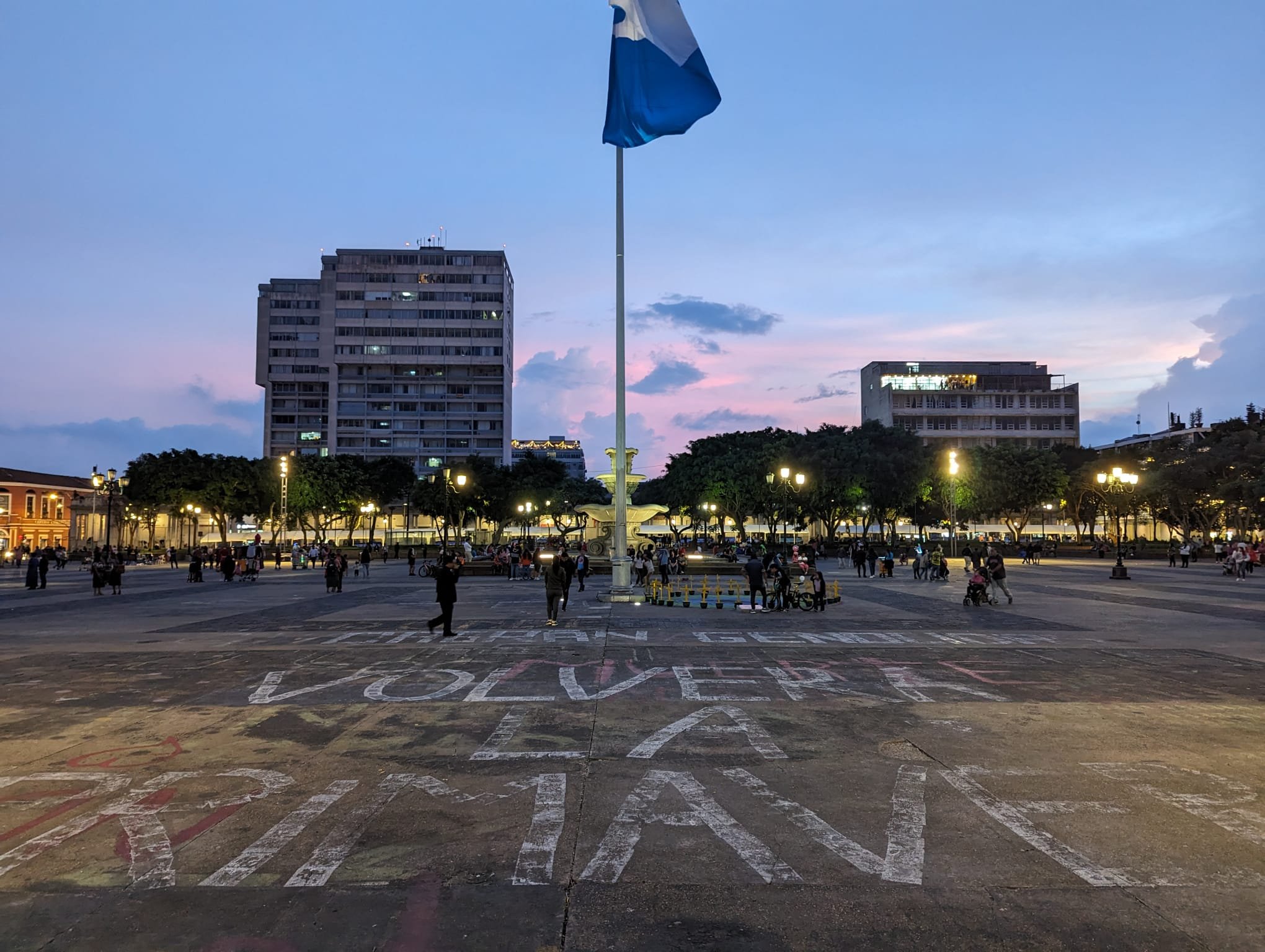BY NADIA REVELO
I was excited about my first trip to Guatemala. In Vancouver, I met a few Guatemalans, most activists for social justice. All were deeply affected by the dictatorship and committed to truth and reparation. From those conversations, I started studying Guatemala's history. I was surprised by the pulsion of revolution in the country from 1944 to today. Guatemalan people have been fighting for dignity. Guatemala became one of the few democracies in Latin America in the 40s, just after World War II, and experienced the repressive influence of the USA and its national elite. The consecutive waves of repression and revolutions have marked rural and urban communities that bravely organized guerrilla groups. In the transition from one wave to another, indigenous people recognized the impact of capitalism and the ancestral discrimination product of colonialism. Today, Guatemala is writing its history again, and we can see the spring returning.
“Florecerás, Guatemala!” Flourish, Guatemala!
Our Joint Partners
The main reason for the trip was to meet with our partners. Although the trip had as a primary goal the visit to Petén, Caitlin and I were determined to see each of our five partners. The dates from August 18 to 25 didn’t seem the most convenient given the tense atmosphere around the second round of the presidential election on August 20; however, everybody made space, and Caitlin and I were able to meet three organizations on August 18, on the eve of the elections.
Friday morning at 9:30 a.m., we had the first meeting with Collective Artesana.
We spent 3 hours listening and sharing ideas with Andrea, Ingrid, and Nancy.
We talked about the conditions of women deprived of liberty in Guatemala. Something highlighted was the impact of imprisonment on the women’s family members, parents, and children. A mother in jail means children with mental health issues and a high chance of ending up in criminal organizations. After women finish the sentence, they must face all the consequences of their absence and the destructive feeling of guilt. We talked about the violation of women deprived of liberty and human rights and the lack of opportunities once free. Despite the scarce economic resources, Artesana has been able to design a Protocol of Specialized assistance to children and teenagers whose parents or family references are deprived of liberty, which is part of the process for the prison system in Guatemala. Although this protocol is just in paper, other countries, such as Uruguay, are implementing it in their prison systems. Also, Artesana keeps giving humanitarian assistance and legal support to women in jail. Their dream is to hire an educator and a psychologist who directly supports the families of the women deprived of liberty so that “la pena* no trascienda” (The penalty doesn’t transcend).
*Pena means sorrow or penalty/punishment in Spanish.
On the same day at 1 p.m., we met Nuestra Voz in their office in sector 1, and we conversed with Tere and Vicky (picture below) about the personal challenges of being a feminist in an intercultural world and leading an organization of indigenous women in Guatemala where misogynism and racism have been used to violently oppressed communities.
We were very impressed by their bold methodology that places the body as the first territory of sovereignty and their connections with the social, cultural, political, and economic decisions made from the local to the planetary. Nuestra Voz works with Maya and Ladina women on sexual and reproductive rights, with the imprint of popular education. Nuestra Voz works "despertando la consciencia de las mujeres" awakening women's consciousness. Tere and Vicky know that the organization needs to work more on its communication strategy in social media, given that they are working on a proposal to add a communicator to their team.
Caitlin and I finished the round of meetings at Alianza Politica de Sector de Mujeres’ Office. We joined Martha, Isabel, Lorena, and Gabi (Picture below).
Martha did an excellent summary of Guatemala's situation. It was unclear if Mr. Arevalo would win the election at that moment. What was clear was the people's outrage due to the corruption and authoritarianism of the government. Martha emphasized the increase in poverty, setbacks in human rights, the crisis in food, health, education, and social protection sectors, and the ongoing impact of the COVID pandemic on women's lives. During the quarantine period, women assumed all social sector roles: teachers, nurses, and food providers, and suffered an increase in gender-based violence. The violence continues as economic violence with the government cuts to social services.
Sector Mujeres was born with the Peace negotiation in 1992, and its institutional goal is to fight oppression. It is an umbrella organization where more than 30 organizations find a safe space to reflect on the country's history, present, and future regarding women's human rights. To be able to coordinate so many organizations, they work on building “complicidades entre nosotras, diversas y plurales” complicities among us (women), diverse and plurals”.
Sector Mujeres values the support of CoDev as a base for their sustainability. The steady international support allows the organization to offer the fundamental space to bring together the lefty and feminist organizations in the country.
After a great day of meetings and being soaked in the Guatemalan reality, Caitlin and I slept at a Guatemalan-Canadian friend's home in the capital. There, we had the incredible surprise of meeting the "Estudiantina de San Carlos," a group of musicians from San Carlos University who were rehearsing.
Our home in Guatemala received us with “La Despedida” by Victor Jara. The deep sound of the Tiple (treble guitar) made me cry recalling the immense mountains of the Andes.
That was my first day in Guatemala. Suddenly, I was involved in its history and struggle and surrounded by sisters and brotherhood.
Saturday morning, we went to Antigua, the former capital of Guatemala, where we saw the active Volcano "Fuego" Fire that breathed and exhaled smoke.
Antigua City , Guatemala
The history of the small town permeated every corner. Like other towns in Latin America, Antigua shows the Catholic church's power during the colonial period and the birth of a new elite in the country. At the Colonial Art Museum, a painting owned by the Jesuit Order caught my attention.
Its message seemed revolutionary to me. “El Pueblo a Pilates” Jesus was sentenced to death due to counterrevolutionary judgments.
It seems to the case of Nuevo Jerusalem communities that were stripped of their land by an unjust judicial sentence. It was a sunny and quiet Saturday in Antigua, a prelude to spring, I guess?
Sunday morning, we flew to the Yucatan Peninsula, Las Flores, Petén and drove to Santa Ana municipality, concrete to Nuevo Horizonte Cooperative, our leading destination. The cooperative is a community of around 350 families connected with ex-guerrilla fighters of FAR. Caitlin and I were welcomed by Rosa and Yolanda, Mother and daughter, both traditional midwives, at the “Casa Materna,” a blue house with a zinc roof where pregnant women from Nuevo Horizonte and other communities can stay while waiting to give birth. Traditional midwives care for them, assist with their labours, or refer them to the hospital if necessary.
Casa Materna in Nuevo Horizonte community, Santa Ana, Guatemala.
Everyone has a history in Nuevo Horizonte and greets each other by name. You can feel the familiarity of those who share a dream beyond themselves. The community has two schools (primary and secondary), childcare, a casa materna, a health center, a nursery, a tourist center, a museum, two small hotels, a restaurant, a pub, a soccer field, a water system, a cooperative office, religious center, and several squares, parks and grocery stores.
In Nuevo Horizonte, Caitlin and I joined a voluntary group of Capacidad, CoDev Canadian partners working directly with Nuevo Horizonte Cooperative.
The team of volunteers has physicians, interpreters, and other professionals who work with the community on technical issues, such as the functioning of the water system.
During four intense days, the team performed medical services, distributed medicines, and trained local people while working with Nuevo Horizonte, El Cartucho, and Nuevo Porvenir community members.
Those communities' reality is that cattle of corn crops sell their labour to landlords and family members who migrated to the USA or Canada. Talking with Nora, a Nuevo Horizonte community health promoter, I realized how climate change is beating these communities. They expected to harvest the corn in August, but the rainy season was delayed this year, and the plants are barely growing, or some have given tiny cobs. Nora said “las plantas deberian estar dobladas” The plants should be bend. It means heavy cobs ready to be harvested. What is coming is high prices of corn and the most challenging conditions to survive.
Forest near Lanquin in the Department of Alta Vera Paz
In Nuevo Horizonte, the plan is to continue planting fruit and timber trees to address the climate challenges, strengthening their tourist strategy, educating their children and youth based on a social justice perspective, and supporting the surrounding communities to learn to work collectively. This is a plan for the next 100 years.
Talking with members of the cooperative, I realized the impact of the pandemic on the community economy. Rony explained that the worst part of the pandemic is being felt now. During the pandemic, they used their reserves, and the current government made it even more difficult for them to return to normality. Their permissions for economic activities were denied, and they had to disobey or starve. Slowly, the community is getting back on track. I asked how else we could support their plan, and Rony asked to advertise their community tourist package.
One of the days in Nuevo Horizonte, I had the great fortune to visit the forest conserved by the community with Pavel (photo below).
He is an expert on the Petén jungle. For many years, he lived there as a combat of FAR. Slowly, Pavel discovered the secrets of "La Selva Aliada," the allied jungle. We met Ramon Blanco (Brosimun Alicastrum), a giant tree that gave combatants food, water, and safe accommodation in the wilderness. In our trekking, Pavel gave us a class on history, biology, and politics together. Each person in Nuevo is history and present alive.
In the afternoon, I visited the jewel of the cooperative, The Museum of Nuevo Horizonte - MUNH. As Dalia explained, the Museum shows the intimate relationship between the FAR and the communities, hence the slogan of the Museum: "La Solidaridad como El Agua al Pez," Solidarity like Water to Fish. The community was the water for FAR, and the military forces led by the elite, with the collaboration of the US government, tried to dry the water through bloody violence. The Museum shows the history of this community, from prehistory to the struggle of FAR combats. This Museum is the outcome of Horizonteco's youth process of research – participation and action. At least three generations of horizontecos joined the effort to assemble their history, which is a testimony to humanity. Many images and pieces of information made me admire this community even more. Visually, the painting of the women observing the water moved me. There is a small detail that shows the drama that the communities suffered.
The Museum of Nuevo Horizonte
I visited the museum with Yolanda and Rony. Yolanda became a teacher at age eight when she was already a militiawoman at four and went to live in the jungle with her mother, Rosa. There, she helped other children read and write. With a stick on the dust, she taught them letters based on significant words, which Paulo Freire would call “palavras geradoras,” generating words. Later, at 16 years old, Yolanda assisted her first delivery and became a midwife. She, her mother and her sister are part of the museum. Their lives are told in panels, videos, and photos.
The Museum of Nuevo Horizonte
What I have seen in Nuevo Horizonte reinforces my idea that working people, regular people, transform society. We change history with our desire and action for justice. Many in the community said it was hard to live in the jungle, but it was worth it. The whole idea of having a cooperative is a continuation of their dreams.
After Petén, Caitlin and I came back to Guatemala City. We arrived Friday night. We met the Comite Campesino del Altiplano CCDA Highland Campesino Committee on Saturday morning. In the room were Neidi, David, Marcelo, Everaldo, Luis, Nubia and Leocadio (photo below). Leocadio thoroughly presented Guatemala's context and the strategic plan of CCDA. Something that often came up was the repression against rural communities. Since 2022, twelve leaders have been killed. Leocadio was travelling to Baja Verapaz to meet a group of community leaders attacked with guns that week.
Leocadio explained the pattern of dispossession followed by the government in opposition to the well-organized indigenous and peasant communities. Given that the government couldn’t sustain the illegal dislocation of peasant / indigenous communities, they switched the role and rules of the state from a guarantor of the common good to a state direct defender of elite interests. So, the Giammattei government closed the offices of Agrarian, Peace and Women Affairs. The Commission of Presidential Dialogue in 2020, all institutions created in the framework of the peace negotiation, and opened Observatories of Private Property, a Prosecutor’s Office Against Usurpation and increased the means for social repression, everything to slow down the process of land recovering lead by the organization such as CCDA and the indigenous communities.
CCDA is a model organization. They work from the practical needs to the strategic changes. To work on the land recovery, Leocadio described the science behind the process. The team has to follow a sequence of studies (historical, documental, anthropological, sociological, among others) to demonstrate to Guatemala authorities that the evicted communities have been historically run over by corrupt landlords who twisted the laws and institutions to steal from the true owner of the land, indigenous people. After this, the team has to continue the struggle, given that the Guatemalan authorities often resist or neglect justice. So, the CCDA has to dispute and goes through all level of justice, even the international courts.
The CCDA presented CoDev with a hand-painted certificate in appreciation of CoDev’s solidarity and a hanging textile containing a woven message of gratitude to Canadian partner, Tim Louis, and Pacific Transit Cooperative.
Ending this very educative meeting, the CCDA team honoured the work of CoDev, BC Casa and Tim Louis. Caitlin received the diploma on behalf of BC Casa, and both of us received the certificate for CoDev and the loom for Tim. Each object is beautiful in itself and even more in its meaning. I am new in CoDev, but I could feel the historical links between the lefty and progressive people in Canada and the struggle of the Guatemalan people. I am so proud to be part of this history.
To end our visit to Guatemala, Caitlin and I visited downtown, where we attended the concert of our compañeros of “Estudiantina de San Carlos.” We joined generations of San Carlos University students fighting for freedom and justice there. We closed the visit in “Restaurante El Portal,” a historic place near the “Parque Central” where Che Guevara was on his visit in 1954. We drank a beer and celebrated life and struggle.

